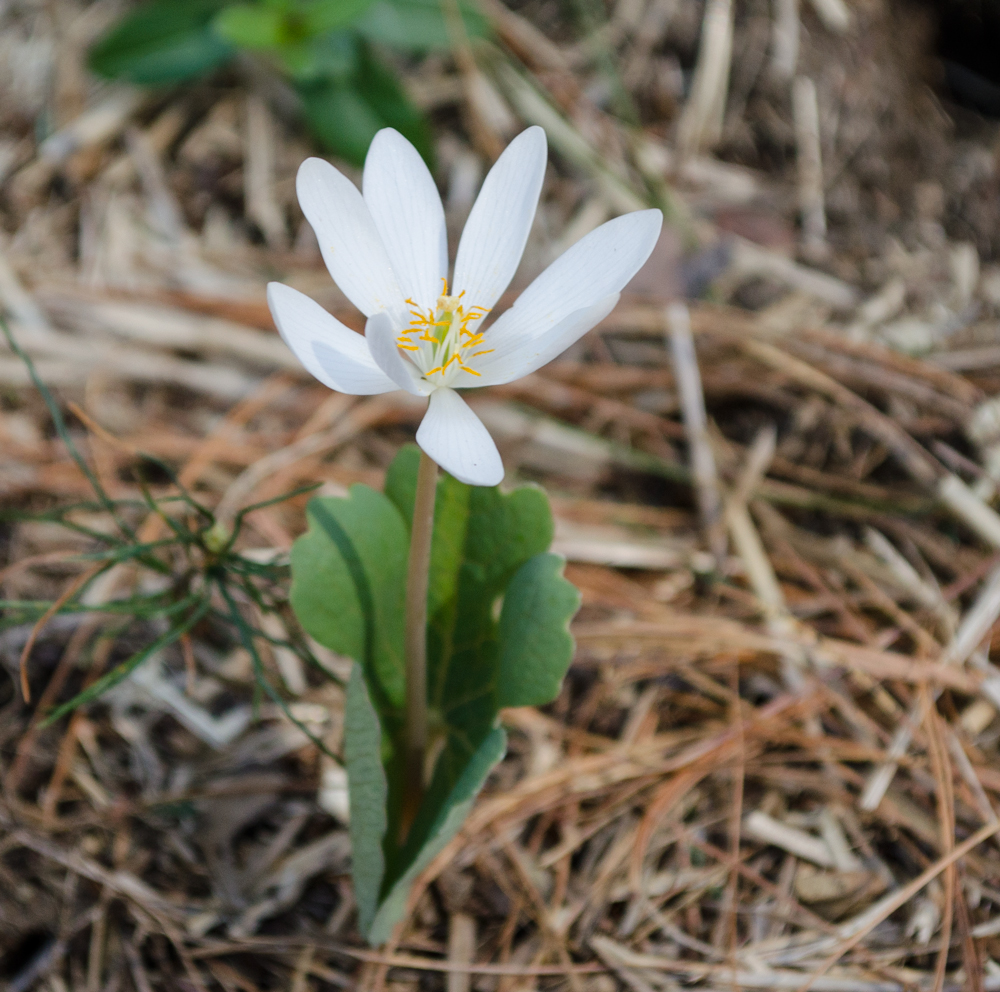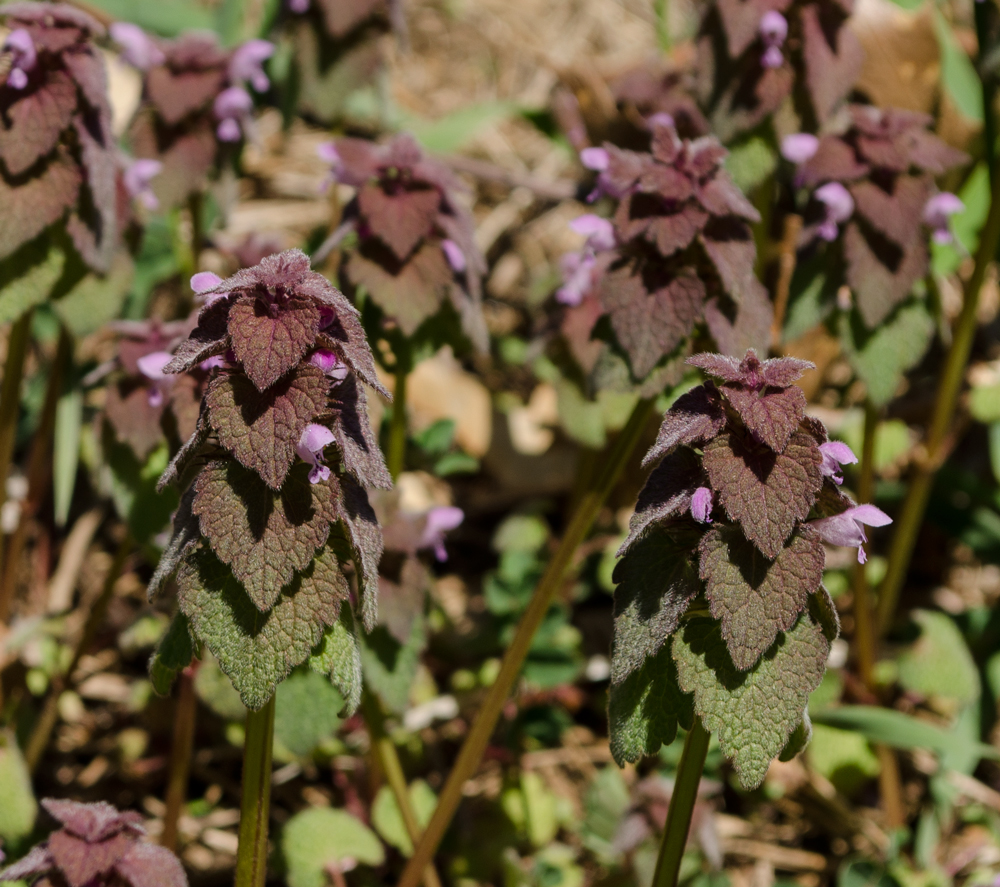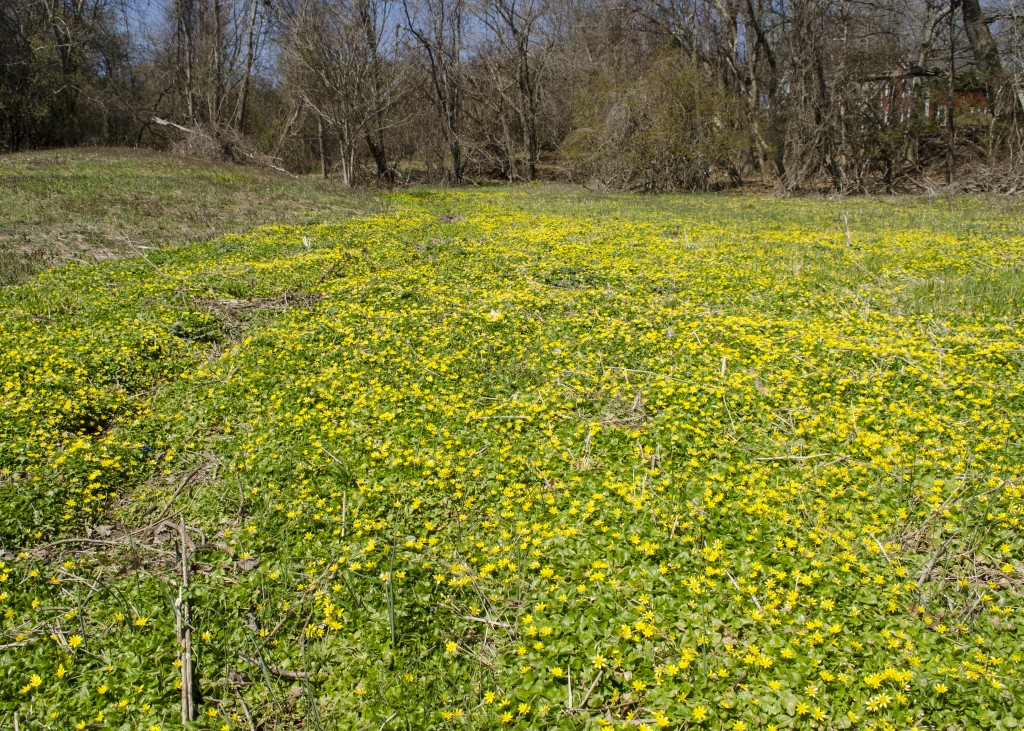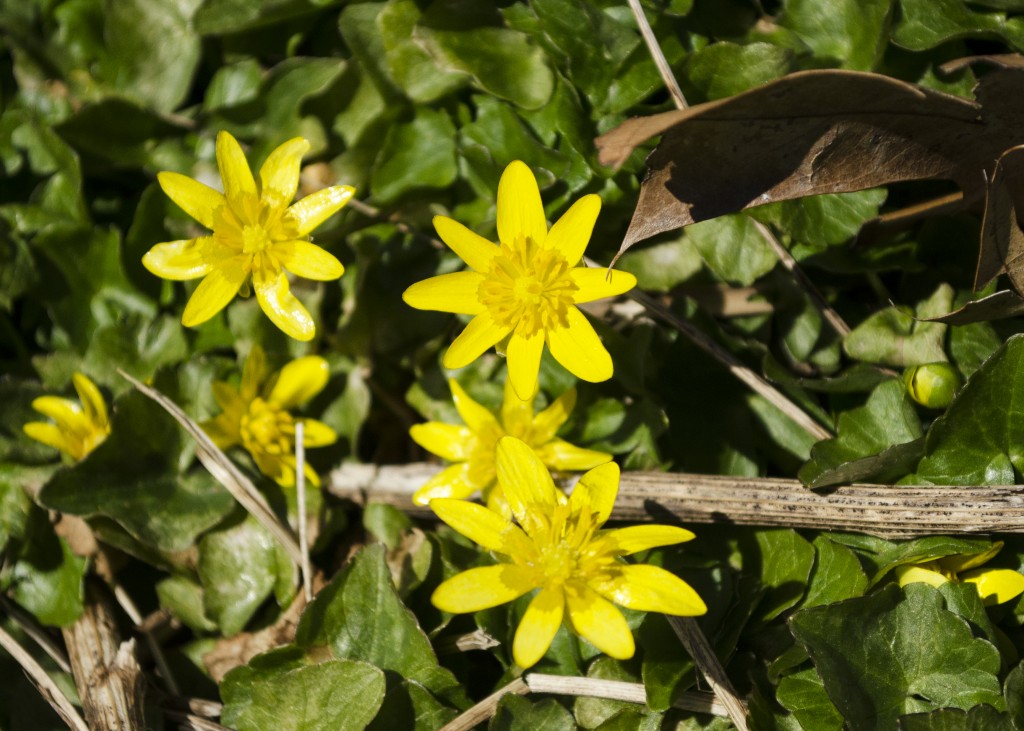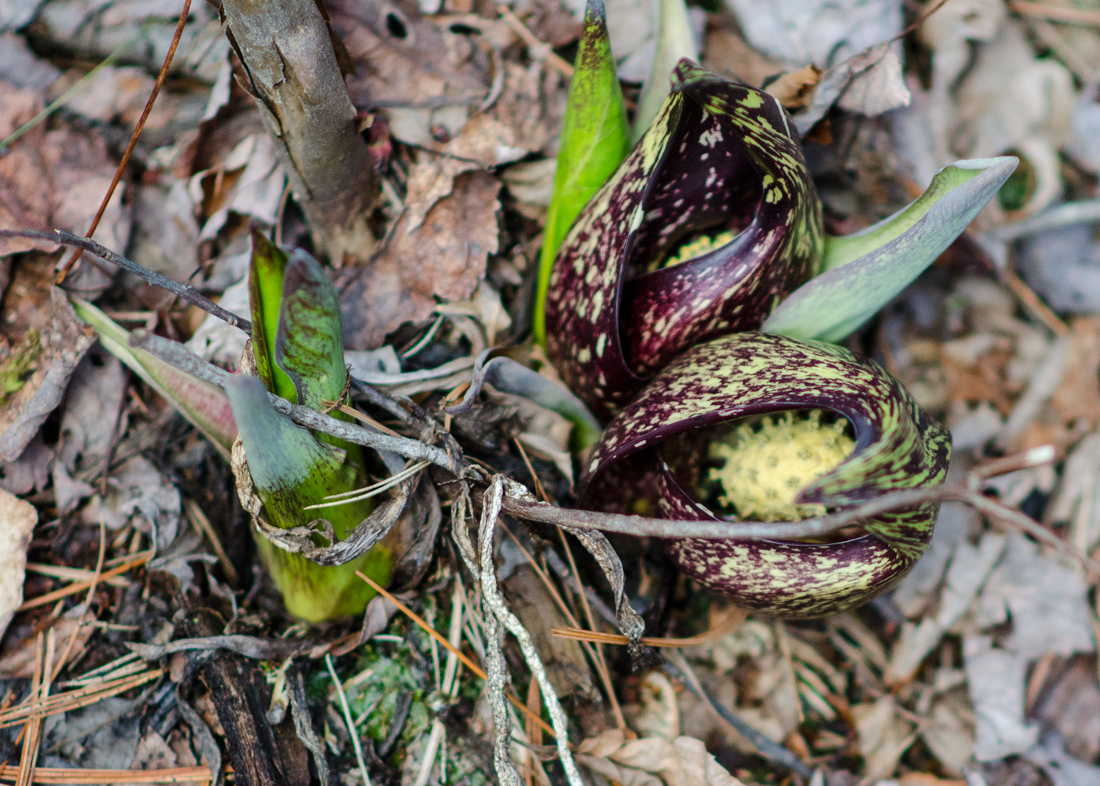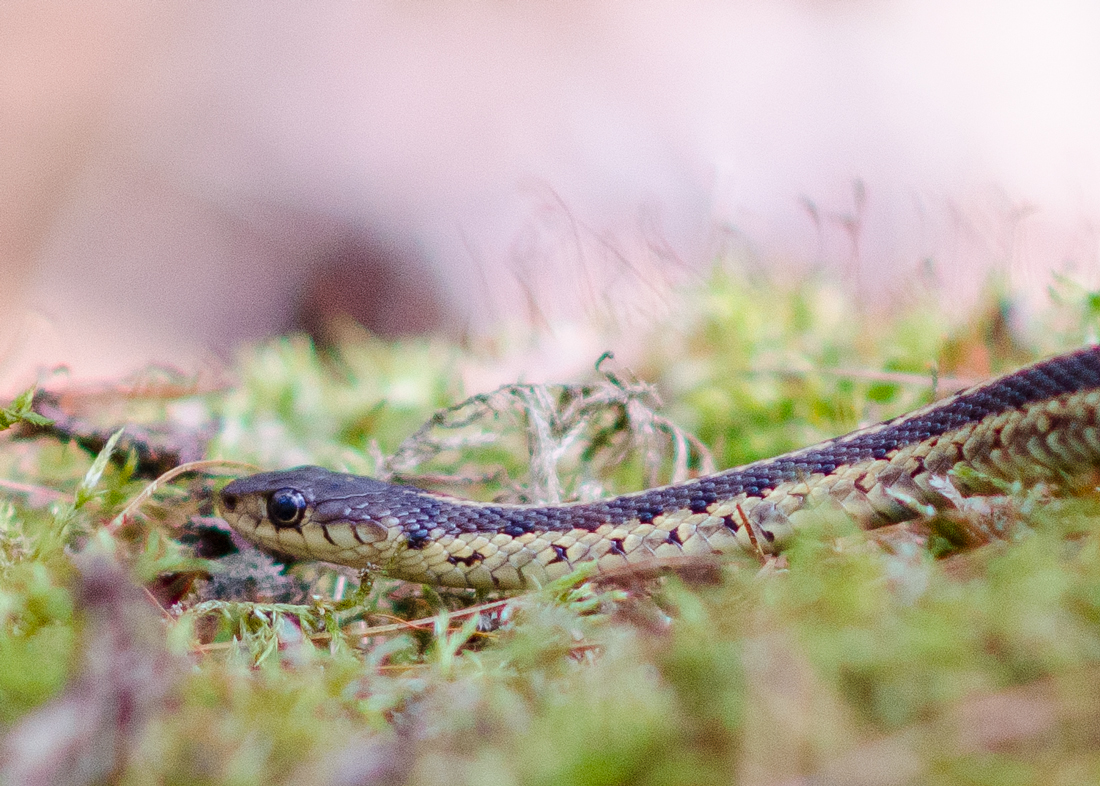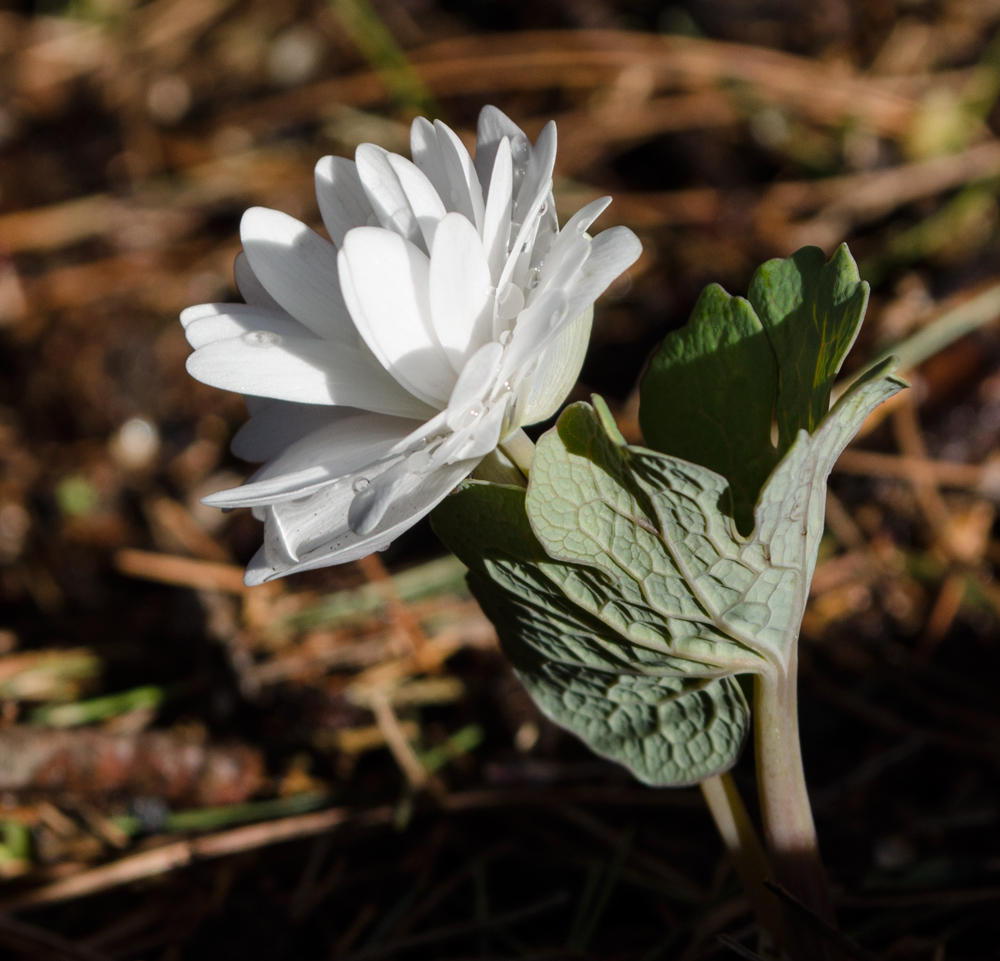
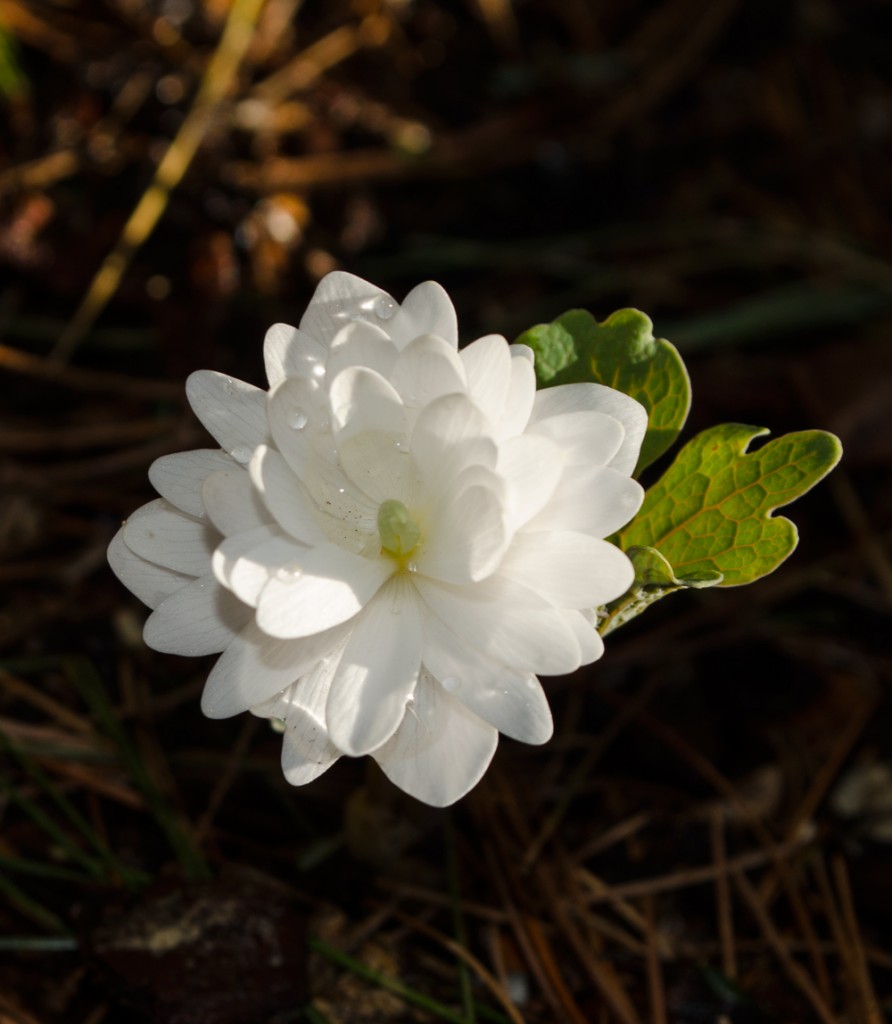
This is a wildflower I admired in the garden of Dr. Wesley Whiteside, and he gave it to me. What a generous plantlover, sowing his spectacular garden into other people’s modest yards… (Shot April 23.)
It looks like a perfect little lotus or water lily. More common: the single version, below. A “spring ephemeral.” Has only basal leaves which wrap around the flower stalk as it begins to bloom. Then the leaves open fully as the flower withers. The flowers bloom only one or two days each, with a fragrant scent. The foliage contains a red juice (which was used by native people to make dye). It’s toxic and usually avoided by herbivores. Native to eastern North America. Poppy family.
Double-flowered Bloodroot (Sanguinaria canadensis ‘multiplex’)
